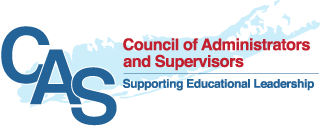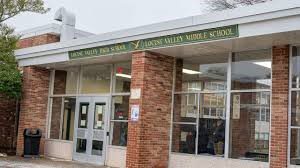The Empire State Supervisors and Administrators Association (ESSAA), CAS’ statewide affiliate held its monthly Stakeholder Meeting on Tuesday, May 26, 2021, via videoconference with Commissioner of Education, Betty Rosa; Deputy Commissioner for P12 Instructional Support, Kim Wilkins; Asst Commissioner for Public Affairs, Emily DeSantis; Chief Financial Officer, Phyllis Morris; Asst Commissioner of Special Education, Chris Suriano; Asst Commissioner for the Office of Student Support Services, Kathleen DeCataldo; Counsel and Deputy Commissioner, Daniel Morton-Bentley; Asst Commissioner for the Office of School Governance, Policy, and Religious and Independent Schools, Christina Coughlin; Asst Commissioner for the Office of Curriculum & Instruction and Early Learning, Marybeth Casey; Associate in the Office of Educational Improvement Services, LoriAnn Curtin; Asst Commissioner for the Office of State Assessment, Steven Katz; Asst Commissioner for the Office of Accountability, Jason Harmon; Asst Counsel, Julia Patane; Associate Commissioner for the Office of Bilingual Education and World Languages, Elisa Alvarez; Director of Education Finance, Sean Giambattista.
ESSAA was represented at the meeting by ESSAA President, Carol Conklin-Spillane; ESSAA Executive Director, Mike Starvaggi; ESSAA Executive Vice President, Skip Voorneveld; ESSAA Director of Information Resources, Celia Strino; ESSAA Vice President, John Rickert; ESSAA Vice President, Tony Baxter; ESSAA Vice President, Greg Avellino; ESSAA Vice President, Rick Kimble; ESSAA member, John Zampaglione; and Regents/NYSED Liaison, Paul Scampini.
This month’s meeting was dedicated to a discussion on the issues and challenges schools are facing as they reopen to in-person instruction and how NYSED can best support the transition.
The discussion focused on an open dialogue around three main questions:
- What has worked best to serve your students, teachers, families, communities and your districts during the 2020-2021 school year? What successful practices would you like to continue into the 2021-2022 school year?
- What have been the challenges for your students, teachers, families, communities and your districts during the 2020-2021 school year? What would help you address these challenges in the 2021-2022 school year?
- What guidance, support or regulatory flexibility is needed from NYSED so that you can better serve students and families in the upcoming school year.
- What has worked best to serve your students, teachers, families, communities and your districts during the 2020-2021 school year? What successful practices would you like to continue into the 2021-2022 school year?
The ESSAA representatives who responded to this question collectively praised their staff and students for the flexibility, resiliency, and creativity they have demonstrated during the past 14 months providing academic instruction and connecting with students to provide social/emotional support.
From the perspective of a high school principal, Mr. Baxter, the Assistant Principal at Sleepy Hollow High School in Westchester, shared that, while students and staff were able to gradually adapt to the many challenges, the emphasis must now be on returning to in-person instruction. One positive impact he observed in his building during the past year was the increased receptiveness of his staff to professional development and more collaborative sharing of instructional best practices among teachers.
At the middle school level. Mr. Zampaglione, Principal of Jonas E. Salk Middle School in Levittown, shared his observation that synchronous instruction, with cameras in the classroom for students learning remotely, proved to be a significantly more effective instructional model than asynchronous instruction.
From a special education perspective, Ms. Strino, Special Education Director for the White Plains City School District, expressed that some students benefitted from expanded access to the different modes of technology used during remote instruction. She added that the combination of increased learning time, less distractions and transitions, and not being pulled from instruction for related services, helped improve the level of student engagement.
Ms. Strino also expressed appreciation for the guidance documents provided by the NYSED Office of Special Education to assist teachers with carrying out progress monitoring and managing learning loss.
- What have been the challenges for your students, teachers, families, communities, and your districts during the 2020-2021 school year? What would help you address these challenges in the 2021-2022 school year?
Mr. Rickert, Principal of Niskayuna High School, expressed frustration with difficulties he and his staff have experienced at the high school level with keeping kids connected socially due to the lack of sports and school activities. He noted a concern with an increasing level of student mental health needs being reported and is currently working to put increased supports in place. Mr. Rickert also noted that, with the many changes that occurred, it was extremely difficult to keep teachers and staff adequately trained in the necessary instructional technologies.
Also related to the high school level, Mr. Baxter added that it was particularly challenging for teachers to monitor the students who were participating remotely to ensure that that they were engaged in instruction. He also expressed concern for the learning loss experienced by a significant number of students from his school who either lacked, or had poor access to the technology needed to participate in remote instruction.
Mr. Zampaglione felt that his biggest challenge at the middle school level centered around the social aspects of school that students were missing out on, particularly for the students who transitioned from an elementary school into the middle school. He feels they have missed out on important developmental experiences associated with acclimating themselves to the logistics of a middle school building such as forging new friendships, and participating in activities within among a larger school population. He went on to say that when his students did return to school, they were very uncertain and anxious about the school environment and are still experiencing problems with adjusting.
- What guidance, support or regulatory flexibility is needed from NYSED so that you can better serve students and families in the upcoming school year?
With regards to Special Education students, Ms. Strino felt that carrying out effective and authentic progress monitoring during remote learning was particularly challenging. She feels there is a need for more clarity with both Special Education instructional guidelines and for how compensatory services should be administered to avoid inconsistencies across districts.
Mr. Rickert shared that as high school principals plan to fully reopen, they will need latitude with planning for logistical issues relating to health and safety. For example, he feels flexibility with NYSED regulations will allow principals to better manage large numbers of students being in the same area such as a cafeteria or auditorium, whether or not to grant off campus privileges to students, and how best to organize clubs and activities.
Mr. Scampini expressed that the reluctance of students to have cameras on during remote instruction has been one of the biggest frustrations shared from both administrators and teachers. He recommended that the upcoming summer break presents an opportunity to reevaluate the requirement and develop a plan that both respects student privacy and provides teachers the opportunity to look into the eyes of students during instruction, whether it be remote or in-person.
Mrs. Conklin-Spillane stated that many of the issues brought up regarding this topic speak to the need for consistent guidance so that regulations are interpreted consistently and fairly. Commissioner Rosa responded that NYSED staff are regularly challenged to develop guidelines that provide flexibility to schools with their decision making while still providing the necessary structure that creates consistent expectations.






